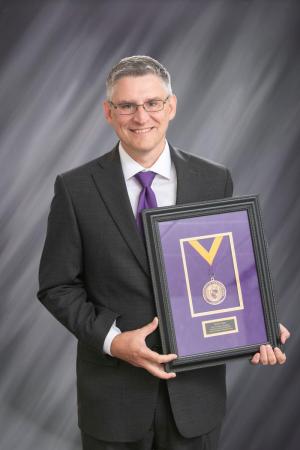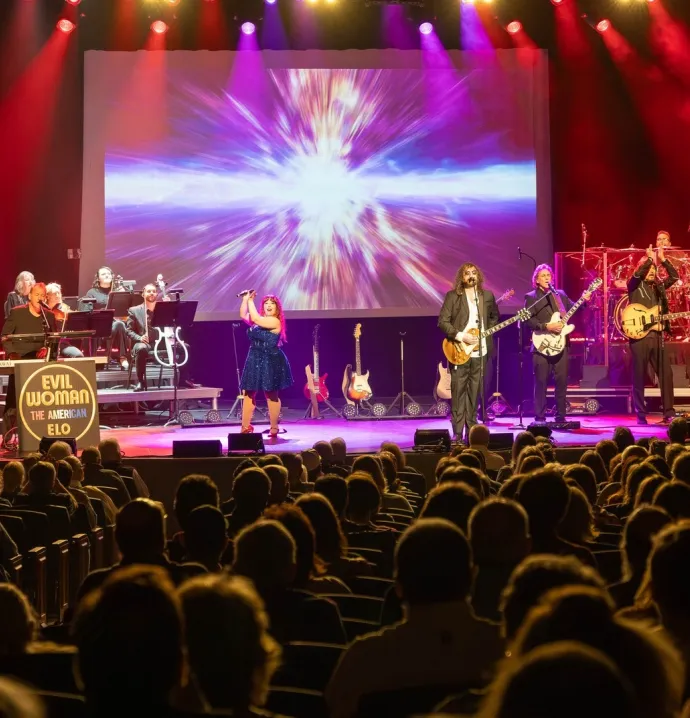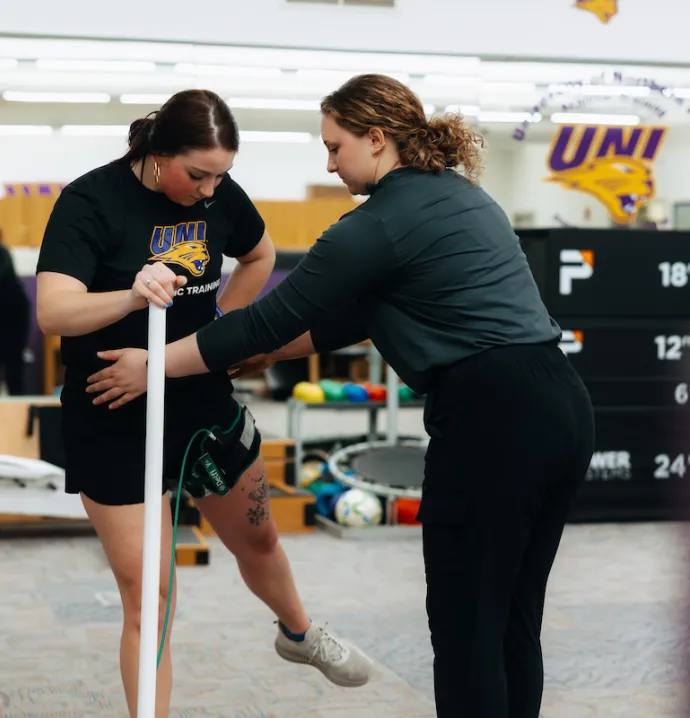Pease nabs first-ever Presidential Medallion
Pease nabs first-ever Presidential Medallion
 During the darkest days of the COVID-19 pandemic, when millions found themselves in self-isolation, the University of Northern Iowa’s faculty and staff came together to accomplish a single goal: safely reopen campus at the start of the fall 2020 semester.
During the darkest days of the COVID-19 pandemic, when millions found themselves in self-isolation, the University of Northern Iowa’s faculty and staff came together to accomplish a single goal: safely reopen campus at the start of the fall 2020 semester.
They managed to do just that, with 70% of the university’s 8,304 students participating in full, in-person learning campus-wide.
This simply could not have happened without contributions from UNI’s Patrick Pease. The associate provost for academic affairs who also co-chaired the Forward Together Steering Committee spent months rearranging the classroom landscape inside buildings across campus to ensure each learning space served as a safe haven for students and instructors alike.
“Really, the entire institution stepped up to the challenge, and there was a level of pride in our ability to work together toward a single goal,” Pease said of his colleagues.
Still, there’s a reason why Pease’s work stood out enough for him to be a first-ever recipient of a Presidential Medallion back in August. President Mark A. Nook awards these medallions to faculty and staff “in recognition of exceptional service.”
“Without Patrick’s leadership with faculty and staff to transform campus to a more COVID-safe learning environment, I don’t know how we would have reopened in fall 2020,” Nook explained. “He played a major role in ensuring our students received a high-quality college experience and were able to continue learning in-person, and do it as safely as possible.”
Traditional classrooms simply weren’t going to be safe in a world where a highly infectious virus was running rampant. So Pease and his team rolled up their sleeves and went to work. They first analyzed pictures and blueprints of various classrooms, studying how and where students were seated and how they interacted with one another in hallways, gathering spaces and dorms. They even studied air flows from each room’s H-VAC system.
“This was a heavy lift for everyone involved,” Pease explained.
The easy part was hauling out chairs to scale some classrooms back from seating 60 to 20. In other rooms, circular pods had to be deconstructed. In order to fit every student safely inside a given area, they had to expand spaces inside certain buildings that were either not being used or had been designated for another purpose. Pease went on a scavenger hunt of sorts in mid-2020 to check every possible nook and cranny on campus for additional space.
“We opened up every large space on campus that was available and turned it into a classroom. Every ballroom, every large meeting room, every large conference room was converted into classrooms,” Pease said.
In many of these new spaces, technology including computers, projectors, whiteboards and screens had to be added. Pease coordinated with IT to make sure each classroom was fully equipped to meet the needs of students. By the time the work was done, Pease had helped convert 16 spaces into makeshift classrooms and modified 160 existing classrooms.
“It was an interesting time,” he said with a chuckle. “There were days where I was going around campus with facilities personnel just making decisions about the spaces on the fly.”
While Pease said it was an “enormous honor” to receive the Presidential Medallion, he also says he couldn’t have done it without the army of hundreds working alongside him.
“Nothing could have happened and none of our goals would have been met without a lot of people doing a lot of heavy lifting,” he said. “It really was a team effort. We should all be proud of the work we did.”




